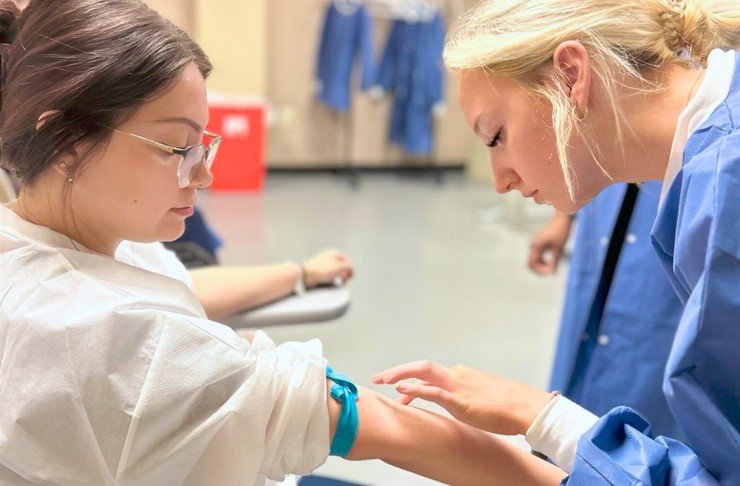Designing the Layout of a Medical Diagnostic Lab: Key Factors to Consider
Summary
- The layout of a medical diagnostic lab plays a crucial role in its efficiency and effectiveness.
- Factors such as Workflow, safety, and compliance with Regulations should be carefully considered when designing the layout of a lab.
- Collaboration between healthcare professionals, architects, and lab designers is essential to create a space that meets the needs of patients and Healthcare Providers.
Introduction
Designing the layout for a medical diagnostic lab is a complex and important task. The layout of a lab can impact the efficiency of operations, the accuracy of Test Results, and the overall experience of patients and Healthcare Providers. In the United States, where healthcare standards and Regulations are stringent, designing a lab layout requires careful consideration of various factors. In this article, we will discuss the most important factors to consider when designing the layout for a medical diagnostic lab in the United States.
Workflow
One of the most important factors to consider when designing the layout of a medical diagnostic lab is Workflow. The layout of the lab should be designed in a way that promotes efficient and smooth Workflow, allowing for the quick and accurate processing of tests. Factors to consider in relation to Workflow include:
- The flow of samples from the point of collection to processing and analysis.
- The organization of equipment and supplies to minimize the time required to conduct tests.
- The segregation of different testing areas to prevent Cross-Contamination and ensure the accuracy of results.
Safety
Ensuring the safety of patients, Healthcare Providers, and laboratory staff is another crucial factor to consider when designing the layout of a medical diagnostic lab. Safety measures should be integrated into the design of the lab to minimize the risk of accidents and exposure to hazardous materials. Some safety considerations include:
- The proper ventilation and airflow systems to prevent the buildup of fumes and contaminants.
- The installation of safety equipment, such as eye wash stations, emergency showers, and fire extinguishers in accessible locations.
- The implementation of strict protocols for waste disposal and the handling of biohazardous materials.
Regulatory Compliance
Compliance with Regulations and standards set forth by government agencies and accreditation bodies is essential when designing the layout of a medical diagnostic lab in the United States. Failure to comply with these Regulations can result in fines, legal action, or the loss of accreditation. Some regulatory considerations include:
- Adherence to the Clinical Laboratory Improvement Amendments (CLIA) Regulations, which set standards for laboratory testing.
- Compliance with Occupational Safety and Health Administration (OSHA) guidelines for workplace safety.
- Ensuring the lab meets the requirements of accrediting bodies such as the College of American Pathologists (CAP) or the Joint Commission.
Collaboration
Designing the layout of a medical diagnostic lab requires collaboration between various stakeholders, including healthcare professionals, architects, lab designers, and equipment suppliers. Each stakeholder brings a unique perspective and expertise to the design process, and their collaboration is essential to create a functional and efficient lab layout. Collaboration can help ensure that the lab meets the needs of patients and Healthcare Providers, complies with Regulations, and promotes safety and efficiency.
Conclusion
Designing the layout of a medical diagnostic lab in the United States requires careful consideration of various factors, including Workflow, safety, regulatory compliance, and collaboration between stakeholders. By taking these factors into account during the design process, healthcare organizations can create a lab that meets the needs of patients and Healthcare Providers, while also ensuring the accuracy and efficiency of diagnostic testing.

Disclaimer: The content provided on this blog is for informational purposes only, reflecting the personal opinions and insights of the author(s) on phlebotomy practices and healthcare. The information provided should not be used for diagnosing or treating a health problem or disease, and those seeking personal medical advice should consult with a licensed physician. Always seek the advice of your doctor or other qualified health provider regarding a medical condition. Never disregard professional medical advice or delay in seeking it because of something you have read on this website. If you think you may have a medical emergency, call 911 or go to the nearest emergency room immediately. No physician-patient relationship is created by this web site or its use. No contributors to this web site make any representations, express or implied, with respect to the information provided herein or to its use. While we strive to share accurate and up-to-date information, we cannot guarantee the completeness, reliability, or accuracy of the content. The blog may also include links to external websites and resources for the convenience of our readers. Please note that linking to other sites does not imply endorsement of their content, practices, or services by us. Readers should use their discretion and judgment while exploring any external links and resources mentioned on this blog.
